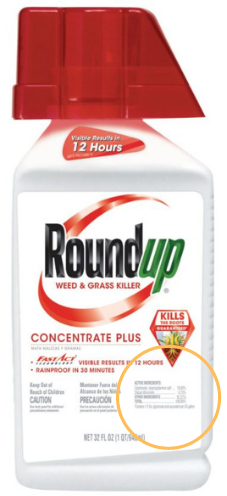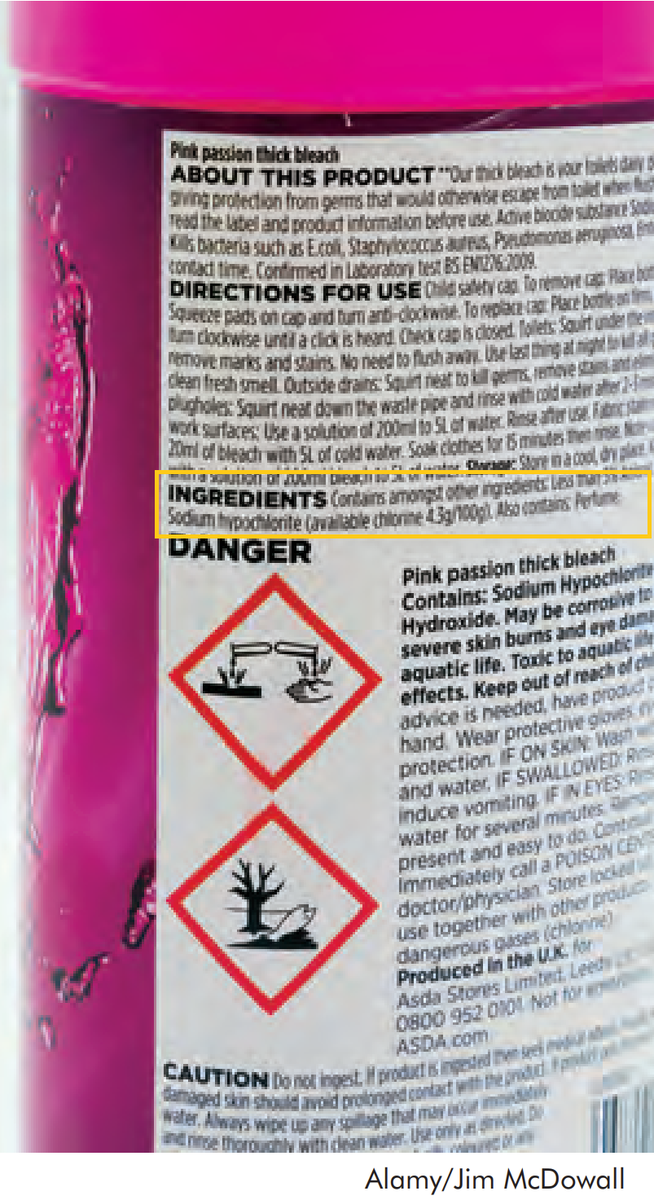Gateway on Pesticide Hazards and Safe Pest Management
How To Find Ingredients in Pesticide Products
Beyond Pesticides offers resources below to evaluate the health and ecological effects of specific chemical exposure from ACTIVE INGREDIENTS in pesticide products, as well as regulatory information and supporting scientific documents. Because various pesticide products can contain more than one active ingredient, it is important to READ the LABEL to determine chemical components.
With 192 different active ingredients and counting, it is essential to establish the connection between the use of these chemicals and their respective hazards.
View the step-by-step guide on how to search for the active ingredient(s) in pesticide products below:
- Go to U.S. EPA's Pesticide Product and Label System and enter the product name. The generic product name may vary.
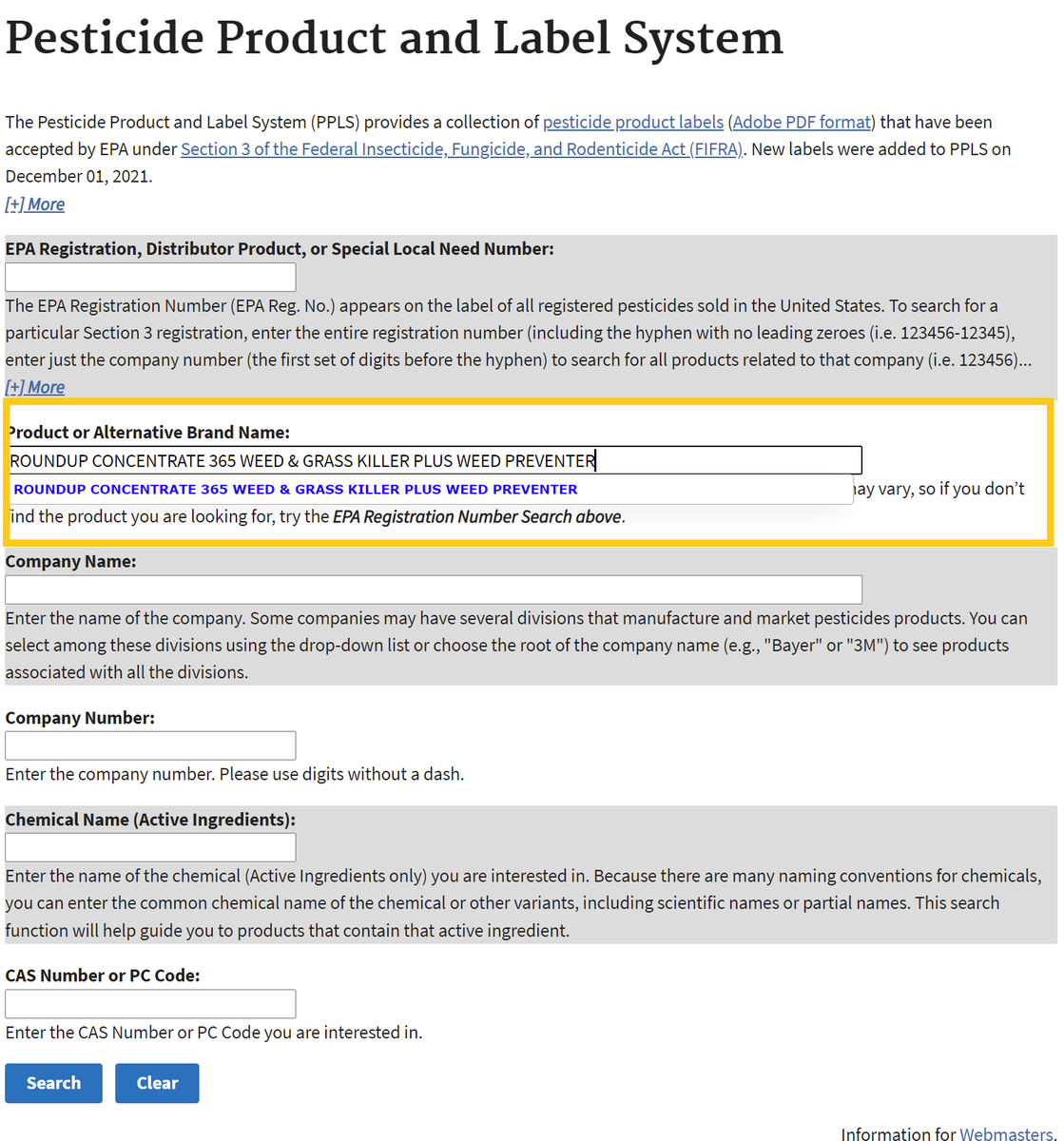
- After searching, click on the chemical ingredients tab or the link for the most recent label to find Active Ingredients.
Chemical List Label List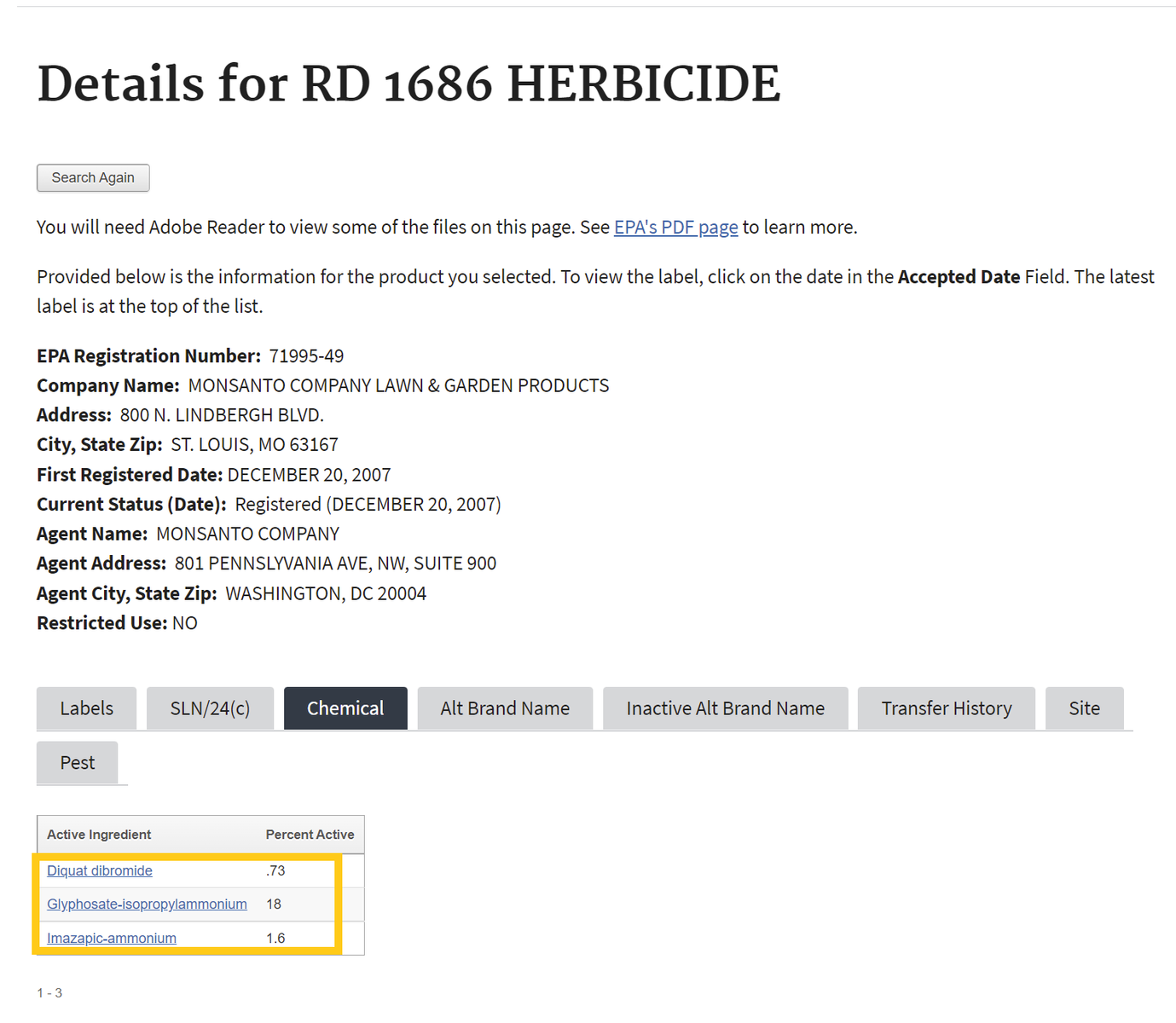
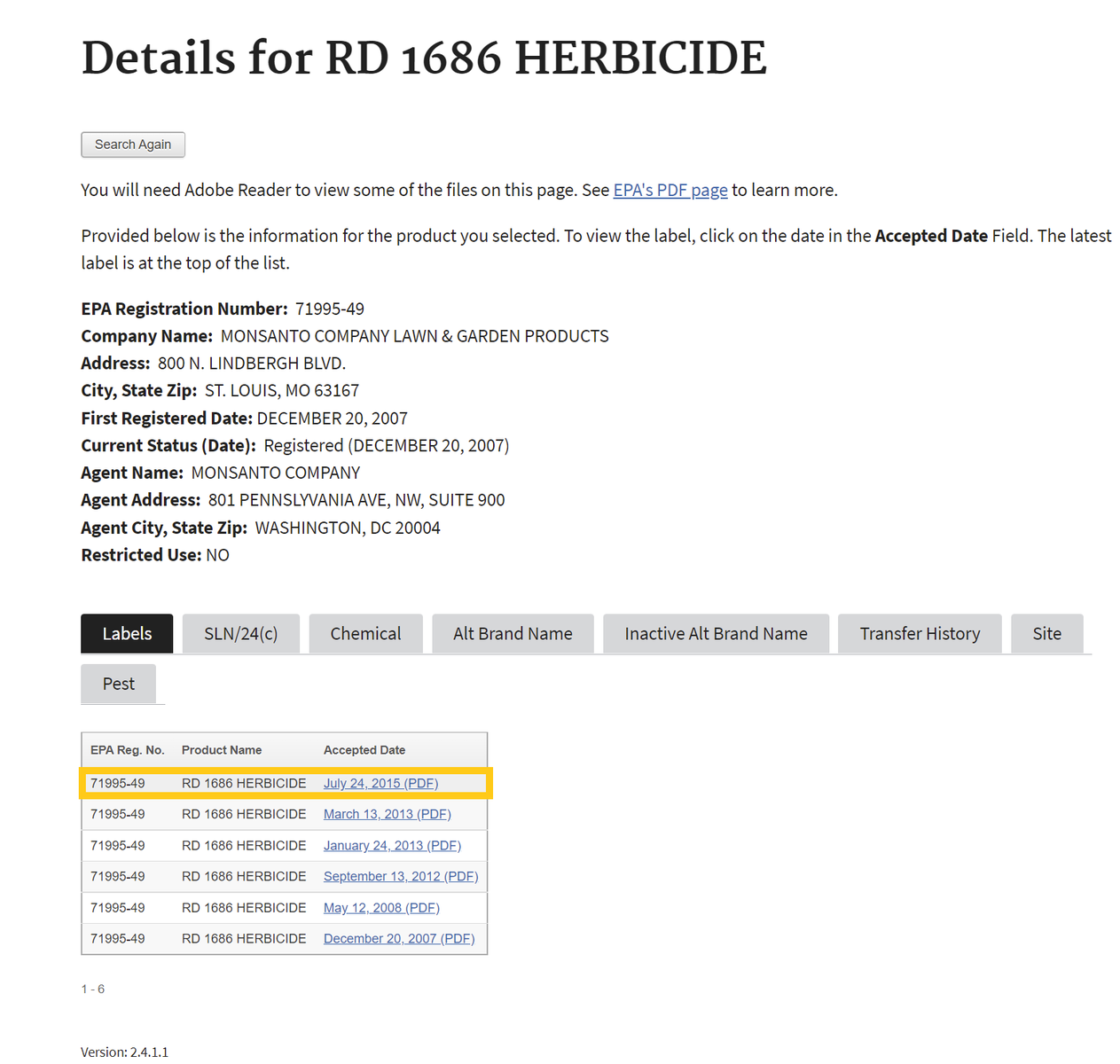
If one selects the chemical ingredients tab, skip to Step 4 . If not, proceed to step number 3 - To find the active ingredient(s) on the label, search for the page in the document containing the date of registration. Usually, the active ingredients section occurs within the first few pages of the label document.
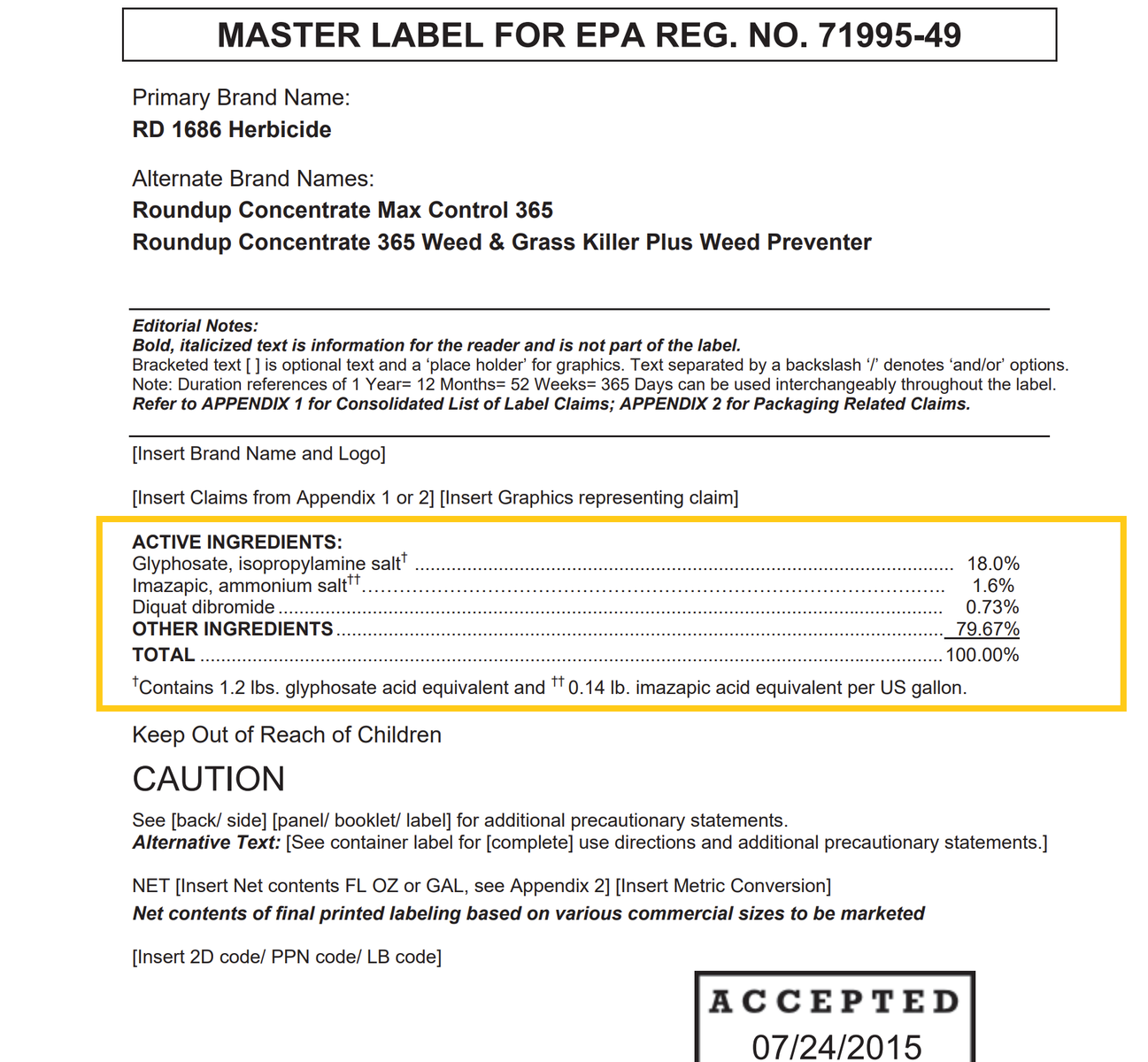
- Return to the Beyond Pesticides Gateway and search for the active ingredient name in the yellow box to the right or from the list below.
Sodium lauryl sulfate
Sodium dodecyl sulfate
Lauryl sulfate salts: sodium lauryl sulfate, magnesium lauryl sulfate, ammonium lauryl sulfate, and triethanolamine lauryl sulfate. According to EPA these four active ingredients have no independent pesticidal activity when included in antimicrobial products, and thus are properly classified as inert ingredients in those products. Antimicrobial products that contain these active ingredients are not subject to registration review.
General Information
- Product Names:
- Chemical Class: Detergent/surfactant
- Uses: Flea and tick repellant. Sodium lauryl sulfate also is a widely used component of many nonpesticidal consumer products currently marketed in the U. S., including shampoos and fruit juices.
- Beyond Pesticides rating: Least-toxic
Health and Environmental Effects
- Cancer: Not documented
- Endocrine Disruption: Not documented
- Reproductive Effects: Not documented
- Neurotoxicity: Not documented
- Kidney/Liver Damage: Not documented
- Sensitizer/ Irritant: Yes (27)
- Birth/Developmental: Not documented
- Detected in Groundwater: Not documented
- Potential Leacher: Not documented
- Toxic to Birds: Not documented
- Toxic to Fish/Aquatic Organisms: Yes*
- Toxic to Bees: Not documented
Additional Information
- Regulatory Status:
- Supporting information:
- PAN Pesticides Database: (Pesticide Action Network)
- Studies:
- Final Report on the Safety Assessment of Sodium Lauryl Sulfate and Ammonium Lauryl Sulfate International Journal of Toxicology, Dec. 1983 2: 127-18
- Sodium Lauryl Sulfate-Induced Irritation in the Human Face: Regional and Age-Related Differences Marrakchi S and Maibach,H.I. 2006. Skin Pharmacol Physiol
- *Toxic action of several lethal concentrations of an anionic detergent on the gills of the brown trout (Salmo trutta L.). Abel, P.D. 1976. J. of Fish Biology
- *Effects of a sublethal concentration of sodium lauryl sulphate on the morphology and Na+/K+ ATPase activity in the gill of the ornate wrasse (Thalassoma pavo). Brunelli, E. at al. 2008. Ecotoxicology and Environmental Safety








.png)
